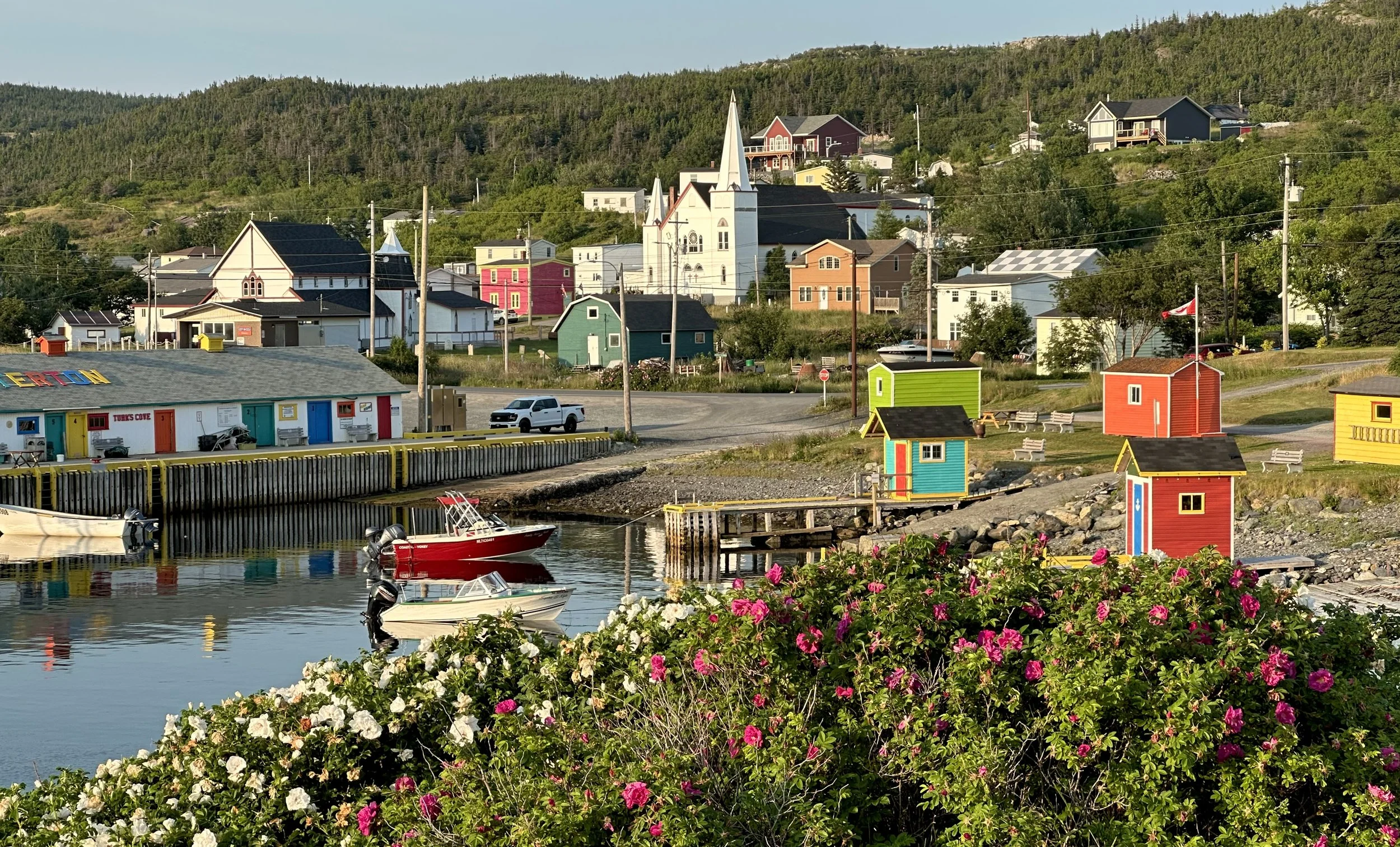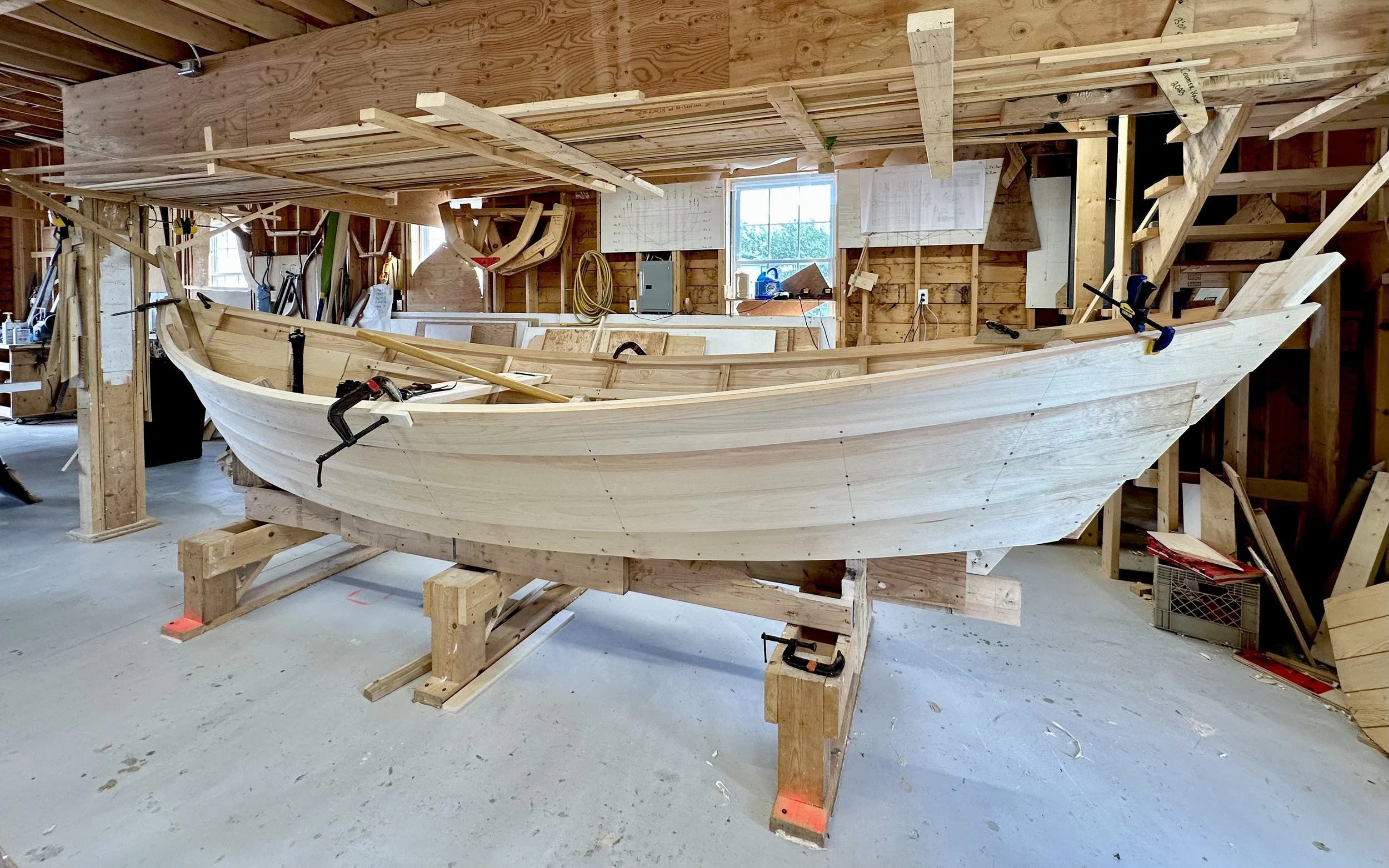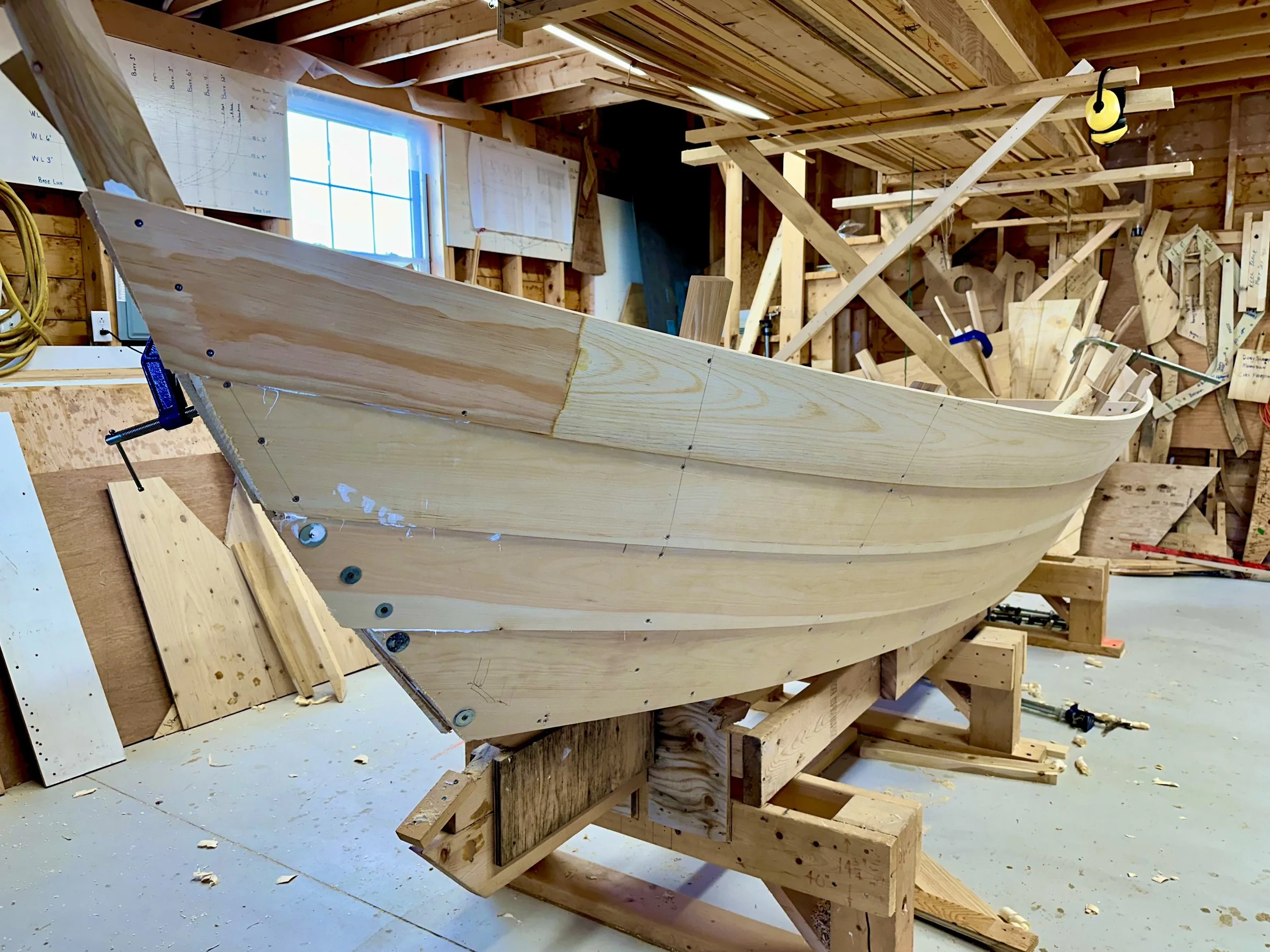Boatbuilding in Winterton: Nailed It (Sort Of)
Winterton, NL
I’ve spent a lot of time writing about Newfoundland’s past—fishermen, shipwrecks, and life along the coast. But for five days this summer, I traded my keyboard for a saw and hoped I wouldn’t lose a finger.
A dory in the boat shed at the Newfoundland & Labrador Wooden Boat Museum, Winterton, NL
I signed up for a dory-building workshop at the Wooden Boat Museum of Newfoundland and Labrador in Winterton. I knew next to nothing about carpentry—and not a whole lot more about dories. But I knew this much: sometimes the best way to understand something is to get your hands on it.
The idea came from a friend. When he first mentioned it, I brushed it off with a laugh—"I couldn’t possibly do that." But the thought lingered. Beneath the doubt, something stirred: curiosity, maybe, or a quiet challenge to prove myself wrong. I kept circling back to the same question: "What if I tried?"
So I signed up. I figured if nothing else, I’d come away with a feel for the kind of labour I’m always writing about—and maybe, in the process, feel a little closer to the people who lived it.
A Learning Curve
Frame of a dory, Wooden Boat Museum of Newfoundland and Labrador
I was out of my depth early and often. But in the end, that didn’t really matter. The instructor, Jerome Canning, had a way of keeping the mood positive, the stress low, and the focus on the boat.
Jerome is a master boatbuilder, a gifted furniture maker, and an amazing teacher. He skillfully guided us, stepping in when we needed help and stepping back when we needed room. He brought stories and patience in equal measure. When something didn’t work, he never made us feel like we failed—he just showed us how to try again.
On day one, we started with a pile of carefully milled lumber—each piece marked and ready. By the end of that first day, the bottom planks were biscuit-joined, and the stem and counter were ready to attach. The frame followed. Then the planking.
Before attending the workshop, I’d have used very few of those words correctly!
Progress
It moved slower than I expected—in the best way. I’d show up each morning thinking we’d have the thing half-built by lunchtime. Turns out, I was wildly optimistic. There’s a lot more to building a wooden boat than just sticking some boards together.
There’s a rhythm to the work—steady, patient, hands-on. Every step builds on the one before it. Every joint needs a bit of fiddling. You’re constantly adjusting, squinting at angles, taking off just a little more with the spokeshave and hoping you didn’t overdo it.
I wasn’t exactly a natural. My cuts were rough, my confidence even rougher. But I kept at it. And slowly, things started to click. Somewhere along the way, I stopped worrying so much about getting everything perfect. I started trusting the process—and myself. Turns out, learning doesn’t always feel like a big breakthrough. Sometimes it just means showing up, staying curious, and giving it another go.
It wasn’t long before the boat shed felt like a comfortable place to be—wood shavings on my shoes, the smell of fresh-cut lumber in the air, and the low hum of saws and conversation all around. It all blended into something entirely enjoyable.
A dory in progress, Wooden Boat Museum of Newfoundland and Labrador
Every corner of the shed held traces of boats built long before ours—marks left behind by skilled hands and well-used tools. As I worked, I kept thinking about the generations who came before me. They didn’t build boats for fun or curiosity. They built them because they had to. No epoxy, no sanders, no five-day workshops. Most had little formal schooling, but they knew wood, wind, and water—and how to survive all three out on the open ocean.
For me, this was a recreational experience. For them, getting it right was a matter of life or death. If the boat failed them, they might not live to tell the tale.
That thought stayed with me all week.
Connections
I came to Winterton hoping to make a meaningful connection with the past. I think I found that—and more. I walked away with a deeper respect for the craft of boatbuilding. I learned to slow down, work with the grain, and trust the process.
The course isn’t a history lesson in the traditional sense. Instead, it’s a hands-on experience that gives anyone interested enough knowledge and skill to build a dory themselves—using modern tools and store-bought lumber. You don’t need to be a carpenter to start, just a willingness to learn and a bit of patience. It’s a bridge between tradition and today, showing how old crafts can live on in new ways.
Nailed It?
Am I now a competent boat builder? Not quite, and I never dreamed I would be. I’m still very much a novice but I learned plenty — both in terms of boats and woodworking.
While I hope the dory we built will float for years to come, what I carry with me is far more lasting. The memory of those days in the boat shed, the rhythm of the work, and the stories shared will stay with me a lifetime.
What I took away with me wasn’t just about building a boat—it was about keeping a piece of Newfoundland tradition alive, one careful cut and thoughtful bend at a time.
Want To Try It Yourself?
If this sounds like something you’d enjoy, I highly recommend checking out the website of the Wooden Boat Museum of Newfoundland and Labrador to learn about their workshops. You don’t have to spend a full week building a dory — there are shorter sessions available for beginners or those short on time.
Not quite ready to sign up for a workshop? No problem. Visitors are always welcome at the boat shed to see the work in progress, ask questions, and soak in the atmosphere. It’s a great way to connect with Newfoundland’s rich boatbuilding heritage — whether you’re holding a spokeshave or just watching from the sidelines.



